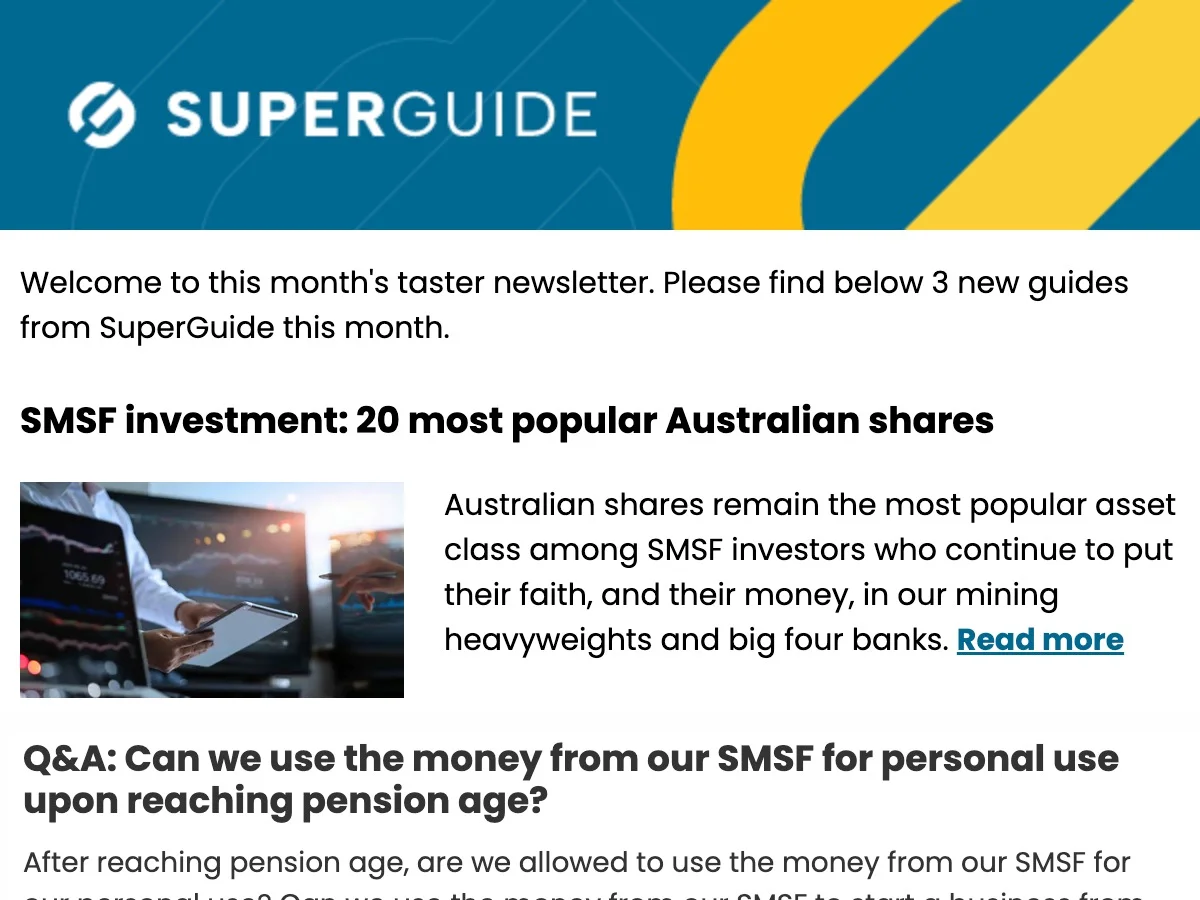In this guide
When you set up a self-managed superannuation fund, or join an existing SMSF, there’s a lot of paperwork involved. One of these mandatory tasks is the trustee declaration.
An SMSF trustee declaration is an Australian Taxation Office (ATO) document that summarises the duties and obligations of an SMSF trustee or director.
All members of an SMSF must be a trustee of their fund, or a director of the company if the fund is set up with a corporate trustee structure.
The reason for making trustee declarations mandatory is because SMSF trustees/directors are legally responsible for their fund’s compliance with superannuation legislation.
How is a trustee declaration different to a trust deed?
An SMSF trustee declaration is a document that each trustee or director of a fund must sign within 21 days of their appointment to indicate that they understand all their legal compliance obligations. The trustee/director appointment could be to a newly created SMSF or to an existing fund that the trustee/director has recently joined.
On the other hand, a trust deed is a comprehensive legal document that outlines how an SMSF will be set up and managed. The deed must be compliant with superannuation legislation and prepared when the SMSF is set up.
2026 SMSF calendar
Our free calendar includes due dates for important documents plus suggested dates for trustee meetings and other strategic issues for your SMSF.
"*" indicates required fields
Who can be a trustee?
Individuals are eligible to be SMSF trustees provided they:
- Are over 18
- Do not have a mental disability
- Are not an undischarged bankrupt (or are not insolvent and under administration)
- Have not been convicted of an offence involving dishonesty
- Have not previously received a civil penalty under superannuation legislation
- Have not been disqualified by a superannuation regulatory body (such as the ATO or the Australian Prudential Regulation Authority).
Companies are eligible to be SMSF corporate trustees provided that:
- They have not been deregistered by the Australian Securities and Investments Commission (ASIC)
- They do not have any directors or other responsible officers who are disqualified individuals
- They have not had a receiver or provisional administrator appointed to manage their operations.
If you are eligible to be a trustee or director, you need to consent to your appointment in writing.
What’s covered in the trustee declaration
When you sign an ATO SMSF trustee declaration, you are indicating you understand key legal compliance obligations, including:
- Ensuring the SMSF satisfies the sole purpose test. All super funds (including SMSFs) must be set up for the sole purpose of providing retirement benefits to fund members (or to their dependants if any members die before retiring)
- Ensuring you will prepare, implement and regularly review the SMSF’s investment strategy. Trustees/directors must document an investment strategy as part of the SMSF set-up process
- The requirement to act in the best interests of all fund members at all times, even if there is a relationship breakdown
- The requirement that the fund’s assets must be kept separate from the personal use assets of trustees
- Ensuring that fund member contributions comply with superannuation legislation
- Ensuring that members only access their SMSF balance if they have met a superannuation condition of release (such as retiring after reaching preservation age, beginning a transition-to-retirement pension, or turning 65)
- Understanding the range of investment restrictions under superannuation legislation (such as restrictions on lending and borrowing money, or from making investments that aren’t arm’s length transactions conducted at commercial market values)
- Understanding their ongoing administrative, reporting and record-keeping responsibilities, such as submitting an annual return to the ATO
- Ensuring that an approved SMSF auditor is appointed to their fund each financial year. Approved auditors are registered with ASIC. An SMSF auditor is responsible for analysing the fund’s financial statements and assessing its compliance with superannuation law. They must report any non-compliance issues to all fund trustees and the ATO
- Ensuring that they make the ATO aware of any changes to fund trustees, directors or members within 28 days of the change occurring.
How and when to complete the declaration
You can download the ATO trustee declaration from the ATO’s website here.
You need to sign the declaration stating you understand your responsibilities within 21 days of becoming a trustee or director.
It’s important to read the contents of the declaration thoroughly before you sign. You should also seek professional advice on any responsibilities you don’t fully understand.
Trustees/directors must all sign and date a separate declaration. That’s because they are all equally responsible for the fund’s compliance, even if one or more trustees play a more active role in managing the fund than others, or if any of the ongoing management tasks are outsourced to a third party.

Free eBook
SMSF investing essentials
Learn the essential facts about the SMSF investment rules, how to create an investment strategy (including templates) and how to give your strategy a healthcheck.
"*" indicates required fields
Each declaration must be witnessed by a person over the age of 18.
In addition, any legal representatives appointed to act as a trustee or director on behalf of a fund member should also sign a trustee declaration. This may be necessary for fund members who are under 18, who are deceased, or who have appointed a power of attorney to handle their affairs.
If a fund is found to be non-compliant, the ATO may ask its trustees or directors to take an education course before re-signing their declaration.
You don’t need to send your fund’s signed trustee declarations to the ATO unless they specifically request them. However, you should ensure that these documents are stored in a safe place where they can be easily accessed if necessary.
How long do I have to keep my declaration documents?
You need to keep your declaration documents while your fund is operating and for a period of ten years after it is wound up. Failure to do so may incur a range of ATO penalties for all your fund’s trustees/directors.
What are the potential penalties for not completing a trustee declaration?
It’s important to thoroughly read and complete your trustee declaration form or you run the risk of not being aware of all your legal obligations. This can put your fund at a greater risk of non-compliance.
The ATO can impose a range of penalties on non-compliant SMSFs, depending on the severity of the breach and the compliance record of fund trustees/directors. These penalties can include:
- Written directions for fund trustees/directors to rectify any non-compliance issues and to undertake a relevant education course to reduce the risk of future non-compliance
- The fund losing its concessional tax treatment. Member contributions and fund earnings in compliant SMSFs are taxed at the concessional super rate of 15%, up to certain contribution limits
- Imposing fines on trustees/directors
- Disqualifying trustees/directors and ordering that the SMSF be wound up
- Prosecuting trustees/directors (which could lead to imprisonment)
The bottom line
SMSF trustees/directors must sign an ATO trustee declaration form within 21 days of their appointment. All members of an SMSF must be either a trustee or a director of their fund.
Supercharge your SMSF

"*" indicates required fields
The information contained in this article is general in nature. It’s best to seek independent professional advice to ensure you understand all your legal compliance obligations before signing an ATO trustee declaration form.



Leave a Reply
You must be logged in to post a comment.